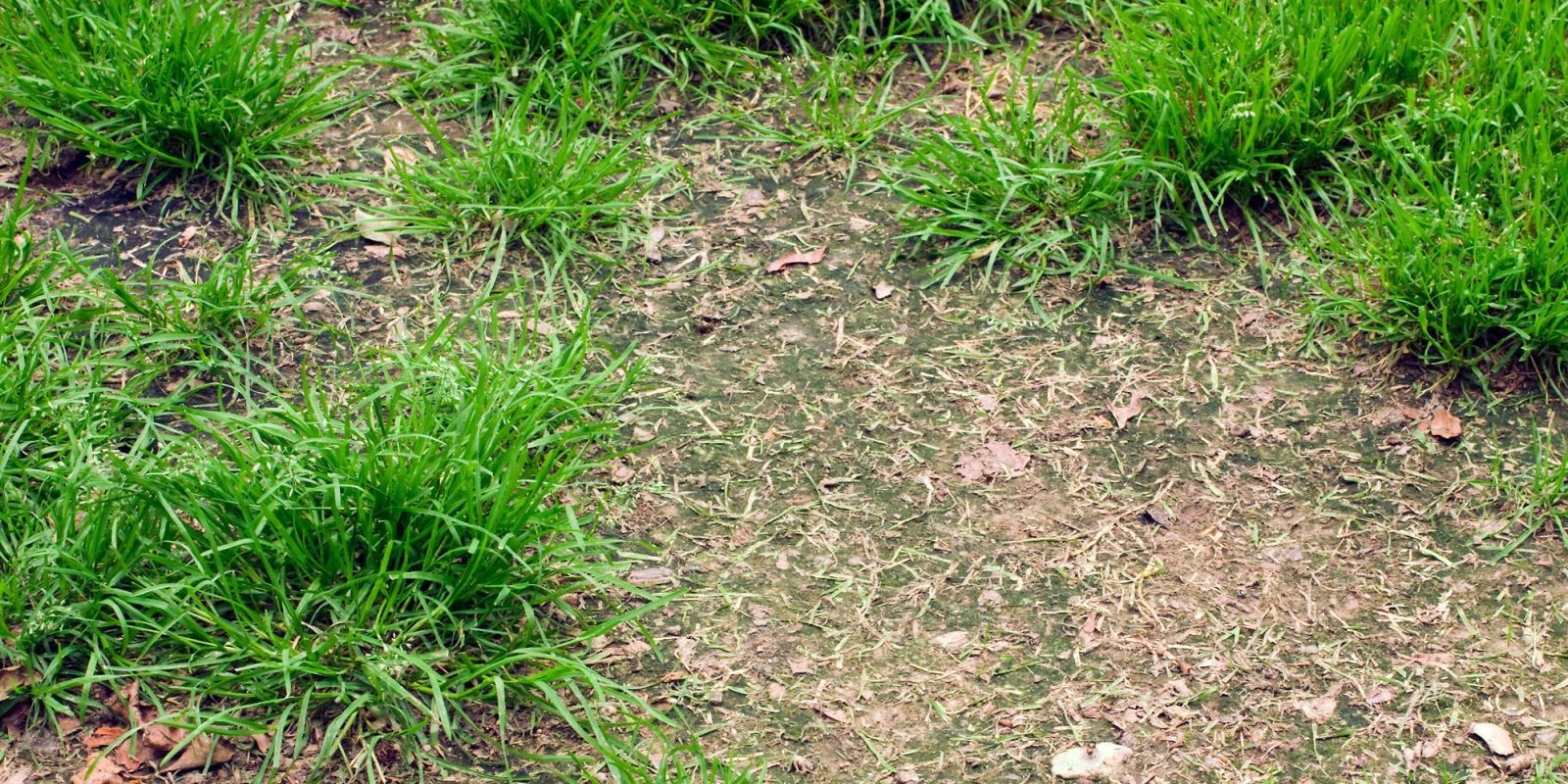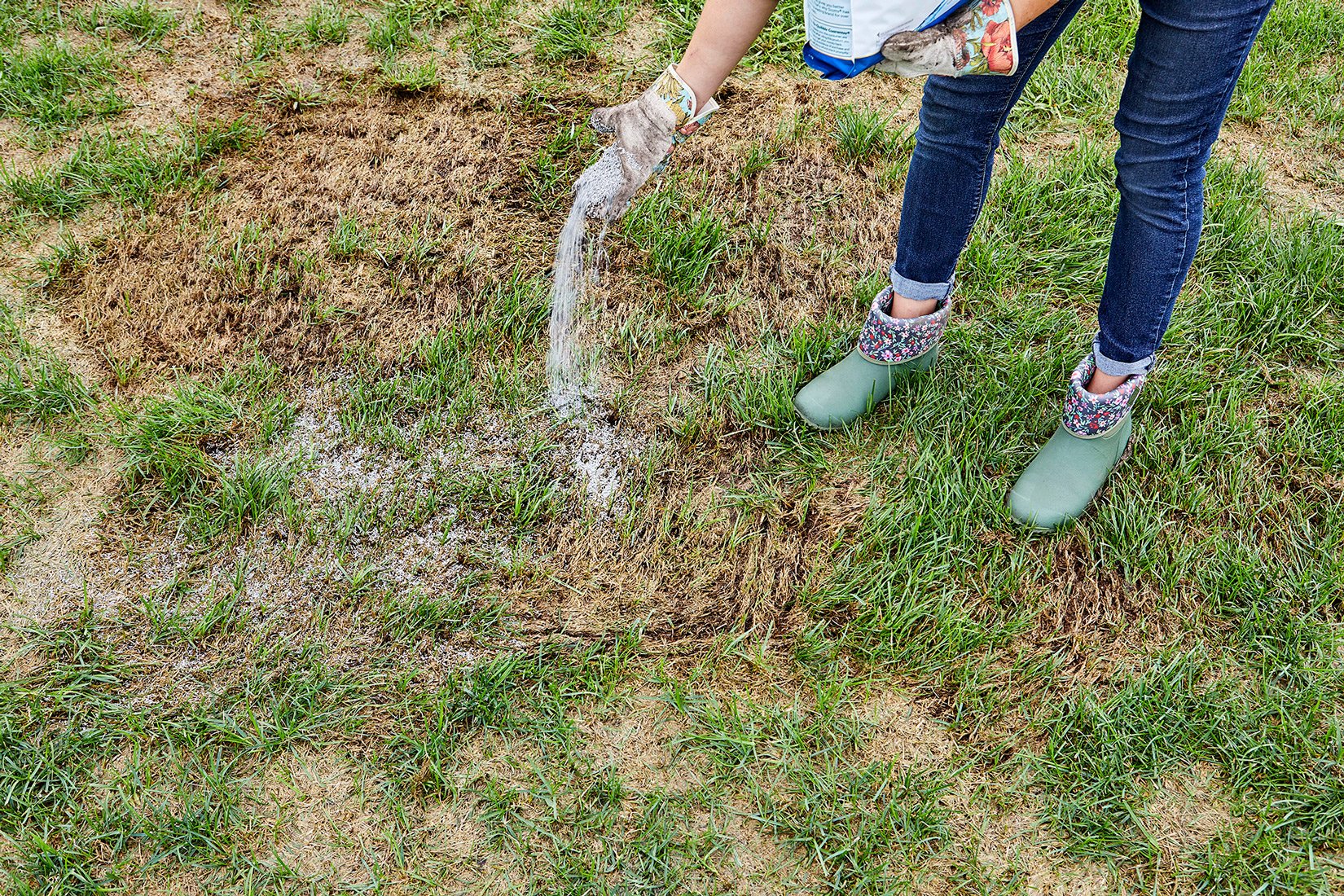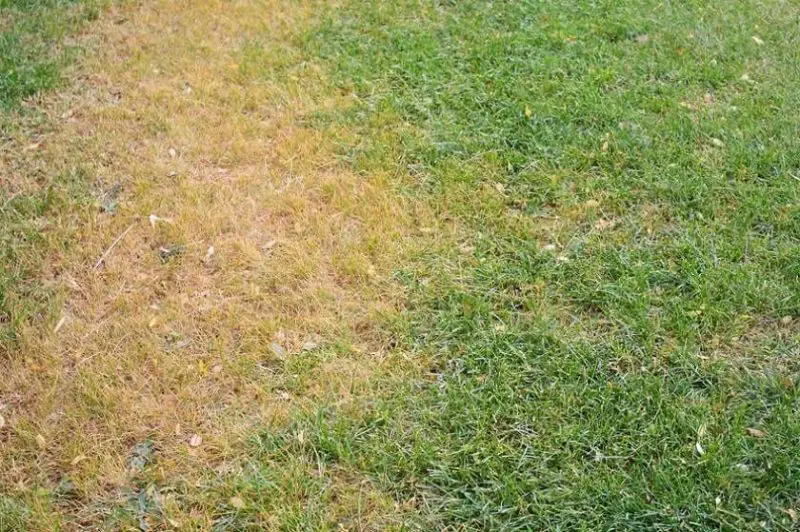Repairing Patches And Dead Spots
Bare patches in your lawn can be caused by any number of things: from common lawn pests, lawn disease and drought to wear and tear from boisterous kids and pets.
Regardless of why they appeared, these spots offer an open invitation to weeds which will cause an even bigger problem if theyre allowed to take hold.
Early to late summer is the best time to repair bare patches because thats when the new lawn will establish quickest.
Patches in your lawn can be repaired with new turf or seed, depending on which type of grass you want to use.
Either way, youll need to prepare the patch by removing all dead lawn or weeds and gently digging into the soil to loosen it up. This will give new plants the best chance of establishment.
Water new grass regularly in hot, windy or dry weather it might need a drink several times a day to give it the best chance of survival.
Note: Most modern Buffalo grasses wont reproduce from seed. Depending on how big an area needs repairing, you might choose to buy a few rolls or slabs of Buffalo Grass from one of our myhomeTURF suppliers.
If youre trying to save money and are in no rush, you might opt for Buffalo Grass plugs or runners.
Specialist growers sell trays of plugs individual Buffalo Grass plants which can be planted into prepared soil.
Runners also need to be planted out individually in trenches. This must be done as soon as possible after theyve been removed from the original spot to prevent the roots from drying out and dying.
Do Get Connected With A Worthwhile Lawn Care Pro
If you are trying to figure out how to get dead grass to grow, then the first thing you should do is connect with a professional. Not just any professional, but a professional who really understands lawns and what they need to thrive.
Why does this matter? Because you need an accurate professional diagnosis of your lawn problem. There are so many different issues that could be causing your dead grass areas, and so many of them have similar symptoms.
It could be a lawn disease or lawn pests. It could even be an environmental stressor. But before you can start solving the problem, you need an accurate diagnosis. Its the most critical first step to a solution and if you receive an improper diagnosis and start treating the wrong problem, you can actually make the problem worse.
What To Do If Your Bare Spot Has Thatch Or Dead Grass Overtop
Also Check: How Much Does Truegreen Cost
How Do I Repair My Lawn And Bring It Back To Life
Healthy lawns are able to withstand quite a bit of abuse. They can out-compete the majority of weeds and tolerate a fair amount of insect feeding, disease and drought without significant injury. Maintaining a healthy lawn is far from easy though. The drought in the summer of 2020 was particularly hard on lawns without irrigation, leading to decline and dieback on many properties. Here is what you need to know if your lawn is not meeting your aesthetic standards.
How To Control Summer Patch

If you determine your lawn is infected with summer patch, you will want to treat it right away. Because summer patch is such a destructive disease, you will need to apply a systemic control thats both curative and preventive, like Scotts® DiseaseEX Lawn Fungicide. This product starts working in 24 hours and lasts up to 4 weeks, and should be applied at the first sign of disease. If youve had problems with summer patch in the past, help prevent it from coming back by applying when conditions are favorable for the disease but before it appears, typically in spring. Be sure to follow label directions.
Recommended Reading: Hydroseed Over Existing Lawn
When Is The Best Time To Fix Your Patchy Lawn
Spring and autumn are the perfect seasons for fixing your patchy lawn. Thats the time when you should sow your grass seeds if youre starting a new lawn, so it makes perfect sense. The damp and cooler weather will give the grass the best chance to recover. What you should also know when it comes to repairing bare spots on your lawn is that the smaller the patch the bigger the possibility for it to fill in on its own. You see, grass can spread vegetatively and small bare patches may well repair themselves gradually, especially if you water, feed and mow the lawn properly. Larger bald areas, however, will need some attention on your part.
Dont Just Wish For The Best
Ignoring your problem and hoping it will get better isnt going to get you anywhere. In fact, chances are, if you already have some brown and dead spots, they are only going to get worse.
These dead areas are an indicator that something is wrong and you need to take action. A problem that is causing your grass to die needs remedying.
Read Also: Selective Herbicide For Johnsongrass
Summer Patch Control: How To Get Rid Of Summer Patch
In the summertime, you may notice some yellowing in your lush green lawn that may be Summer Patch trying to break out of the soil and establish itself. If left untreated, this disease has the potential to kill off the root system of your turfgrass.
Summer patch is a lawn disease that usually becomes apparent in the summer, which is how the disease earned its name. It is caused by a pathogen known as Magnaporthe poae which is most active during late spring and summer when turfgrass root growth is diminished. This allows Summer Patch to really take hold. It thrives on wet soil conditions and can spread very quickly under the ideal circumstances.
If your lawn has Summer Patch, you can control it and prevent its spread with the help of our DIY guide which was put together by lawn care experts. Follow our directions carefully and you will be able to restore your lawn and get rid of Summer Patch quickly and affordably.
Hiring The Right Lawn Care Professional To Fix Dead Grass Areas
When it comes to how to repair grass at your home in Allentown, Bethlehem, or Easton, PA, it may be a bit more involved than you had anticipated. As we mentioned, we often hear from homeowners who tell us they thought they could just water the spots or throw fertilizer down, and they could be fixed.
But your best bet is to hire a lawn care service who truly understands the science behind lawns. First and foremost, you want to be sure that your lawn problem is properly diagnosed as time is often of the essence when it comes to the solution.
If youre ready to work with a lawn care company that knows what your grass needs at your Allentown, Bethlehem, or Easton, PA home, get in touch with us to get some free expert advice and learn more about our lawn care program options.
Ready to get started?
Recommended Reading: Cost To Hydroseed 1 4 Acre
Reseed With Resistant Grass Varieties
Where all other efforts fail you may need to reseed with a turfgrass variety that has known resistance to this fungus. A variety of grasses are available with moderate resistance to the Rhizoctonia fungus. If a brown patch is an annual occurrence, consider top-seeding your lawn with resistant grasses. Check with your local university extension service on recommendations for resistant grass species.
Do Repair The Lawn With The Right Method
First, you have to get the problem under control. Whether a pro diagnoses a disease, a pest, or an environmental concern , you need to address the problem so that it doesnt keep coming back.
Once thats done, then youll need to apply the right method of repair. For the vast majority of cases, aeration and overseeding will restore the dead patches in your lawn.
While there are other more intensive repair methods out there, which tend to be quite costly, even in some of the worst cases weve seen, aeration and overseeding have been effective at repairing dead patches.
Of course, its important to ensure that its performed properly. There is a best time to repair a lawn, which is in the fall when new grass seed will be able to thrive.
Read Also: How Do I Kill Ants In My Yard
Applying Your Seeding Mixture
Choose a repair mixture suited to your climate, grass type and sunlight exposure. Premium grass seed, moisture-retaining mulch and stabilized-release fertilizer in Pennington One Step Complete safeguard germinating seed and nourish emerging seedlings until the lawn is ready for normal care regimens.
Smooth the seeding mixture over the soil, applying it at a rate of 1 cup per square foot. This ensures adequate sunlight for germinating and proper seed-to-soil contact for quick, thorough grass establishment. Forget about planting depth and seed stabilization simply cover exposed soil thoroughly, and water the seeding mixture well.
Proper watering is the most important and often the most neglected part of the spot repair process. Moisture-retentive mulch reduces necessary watering and keeps protected seed in place, even on slopes, but expect to water at least once daily. Let weather guide your efforts adjust your watering to keep repaired areas consistently moist, but never soggy.
Keep repaired areas evenly moist until seedlings reach the recommended mowing height for your chosen grass type. For example, a dense shade mixture should reach 2 1/2 to 3 inches tall, and tall fescue should measure 3 to 4 inches, before you reduce watering to a normal weekly or twice-weekly schedule. Seedlings emerge over seven to 21 days after repair, depending on your mix, and reach mowing height in three to four additional weeks.
What To Do If Your Bare Spot Is Exposed Soil

Also Check: Triclopyr Wild Violets
Problem: Lack Of Sunlight Solution: Look For Lawn Alternatives
Even so-called shade-tolerant varieties of turfgrass wont do well in dark corners of the yard. And pruning trees too aggressively to create sunlight can end up harming the tree. Youre better off cutting your losses and replacing the sun-starved patch of grass with a shade-tolerant ground cover, such as bishops hat or sweet woodruff. Or you might convert that part of the lawn with gravel or a perennial bed.
Preparing Bare Spots For Repair
Mow damaged spots and surrounding areas at normal spring mowing levels, and then remove dead or damaged grass to expose clean soil. If leveling is needed, add or remove topsoil, rake spots briskly, and then smooth the surface. Loose, smooth soil invites new seedlings to take hold.
Delay adding pre-emergent herbicides or weed-and-feed products to repair areas. Unless applied at least five to six weeks before seeding, these products hamper seed germination and rooting.
Don’t Miss: Snapper 2911525bve
My Lawn Has Bare Spots
If, on the other hand, your grass is in generally good condition but has a few bare spots, youll want to take a different approach. You can get those areas growing again with Scotts® EZ Seed® Patch & Repair or Scotts® Sprouts.
EZ Seed® has a unique combination of Scotts® high performance seed, premium continuous release lawn food, and super-absorbent growing material. You loosen the soil with a rake, spread the seeds according to the package directions, and water daily until new grass seedlings are 2 tall .
With Sprouts, you start the growing process in the bag. Just add 3 cups of water, wait 3 days for the seeds to sprout, and then spread the already growing grass onto any bare spots. Following the label directions, you should see grass pop up in 1 to 2 days.
How To Maintain Your Lawn To Help Prevent Summer Patch
A lawn that is thick and well-cared for is less susceptible to diseases like summer patch. Keep yours in great shape by:
- Overseeding regularly with Scotts® Turf Builder® ThickR Lawn Sun & Shade or Scotts® Turf Builder® ThickR Lawn Tall Fescue Mix . Both contain turfgrass species that are resistant to summer patch, plus a fertilizer designed to make soil more acidic, which can reduce the severity of the disease.
You May Like: Lawn Roller To Remove Tire Ruts
One: Plugs Or Squares
First decide if you will use plugs or squares. Typically, grass plugs come in trays of 36 plugssmall cubes of soil with grass. Plugs are planted 6-12 apart. Squares can be purchased singly or by the pallet. A pallet of sod squares covers 400-500 square feet .
Squares of sod cut to fit bare areas will produce instant full coverage. The same bare area installed with plugs will take weeks for full coverage as runners grow out from the plugs and interconnect.
People generally choose plugs as a cost-saving strategy.
Will Grass Spread To Bare Spots
It really depends on what grass type you have. You may be in luck if your lawn is comprised of either Kentucky Bluegrass, Bermuda Grass, Zoysia Grass, St. Augustine Grass or Creeping Red Fescue. These grasses have runners, or vine-like stolons above ground and stem-like rhizomes below ground, allowing them to expand sideways and gradually fill in any Bare Spots that may have taken residence in your lawn. Your chances of having an existing spreading grass are higher if you live in the south. Most grasses in the north are bunch-type grasses, which dont spread well. If you need help identifying which types of grasses you have in your lawn, let us know.
Recommended Reading: Wild Violet Herbicide
Penetrate Grassroots With Aeration
Saul, along with garden expert Noah James, recommends the process of aeration that will increase airflow to the roots, encouraging oxygen for root health. Stronger roots grow deeper and promote a verdant lawn that is more resistant to future patching. The process also eases soil compaction for a versatile lawn for the cooler seasons ahead.
Do You Love Learning About Stuff Like This

A monthly newsletter for New Hampshire gardeners, homesteaders and plant-lovers of all kinds, that includes seasonal suggested gardening tips, upcoming events and articles with proven solutions for your garden and landscape.
Got questions? The Ask UNH Extension Infoline offers practical help finding answers for your home, yard, and garden questions. Call toll free at 1-877-398-4769, Monday to Friday, 9 a.m. to 2 p.m., or e-mail us at .
You May Like: Peat Moss On Lawn
Other Ways To Repair Lawn Patches
Short on time? You can repair your lawn patches with turf rather than seed for instant results. If you’re using new turf, be sure to lay it as soon as possible once you have it, to prevent it from drying out.
Cutting turf to fix a lawn
Whether you want to repair lawn patches by reseeding or turfing, it’s important to give it a chance to establish before you mow it.
Even with the best lawn mower, you’ll need to wait until your newly sown grass is at least 2.42.8in tall . If you’ve used turf, you’ll need to wait until the grass is 22.4in tall. Don’t set the blades too low you’ll want to remove no more than 25% on the first cut, say the experts at Premier Lawns.
Don’t mow your new grass too soon
Most of us want to know how to get rid of lawn weeds in our garden, however one weed in particular clover can be rather beneficial for avoiding brown patches in your lawn.
Fancy a lower maintenance groundcover for your yard? We’ve rounded up lots of alternatives to grass that are practical and stylish in our dedicated guide.
How To Repair A Lawn
Youve put a lot of effort into your lawn, but it doesnt look as good as it should.
Before you become disheartened, look at this checklist to see if theres something else you can do to bring it back to its full glory.
Remember that any lawn repair is best done in spring or summer depending on the climate in your area when the lawn is actively growing.
Don’t Miss: Peat Moss Vs Topsoil For Grass Seed